Should You Ice Bath Before or After Workout?
Author:
Unlock your full potential by engaging with our experts and community! Have questions about your fitness journey or looking for expert advice on weightlifting techniques? Don’t hesitate — leave a comment below and Jacek Szymanowski will provide a personalized answer and insights to help you reach your goals.
Torokhtiy is reader-supported. Some links are affiliate links, and we may earn a commission at no extra cost to you. See our disclosure page for details.
Traditionally, an ice bath before or after workout was synonymous with the strength and conditioning community. Today, however, ice baths are everywhere for a good reason: the benefits of cold plunges are indisputable.
For example, from a workout/exercise perspective, cold water plunges are handy for body recovery, mental capacity, stress resistance, with possible chance to improve athletic performance as well.
However, timing is key. If you’ve been in the workout/exercise world and the science that follows it, you know there’s a lot of conflicting information as to when is the best time to cold plunge. Different schools of thought exist on whether to take an ice bath/cold plunge before or after workout.
The answers to whether you should take an ice bath before or after workout aren’t straightforward, nor are the reasons behind it. Plenty of nuances revolve around this topic, including individual variations, training regimes, fitness goals, potential dangers, and impaired adaptations to individual medical considerations.
Today, we’re going to discuss the use of voluntary cold exposure for health and performance. Specifically, we shall explore whether to use an ice bath before or after exercise.
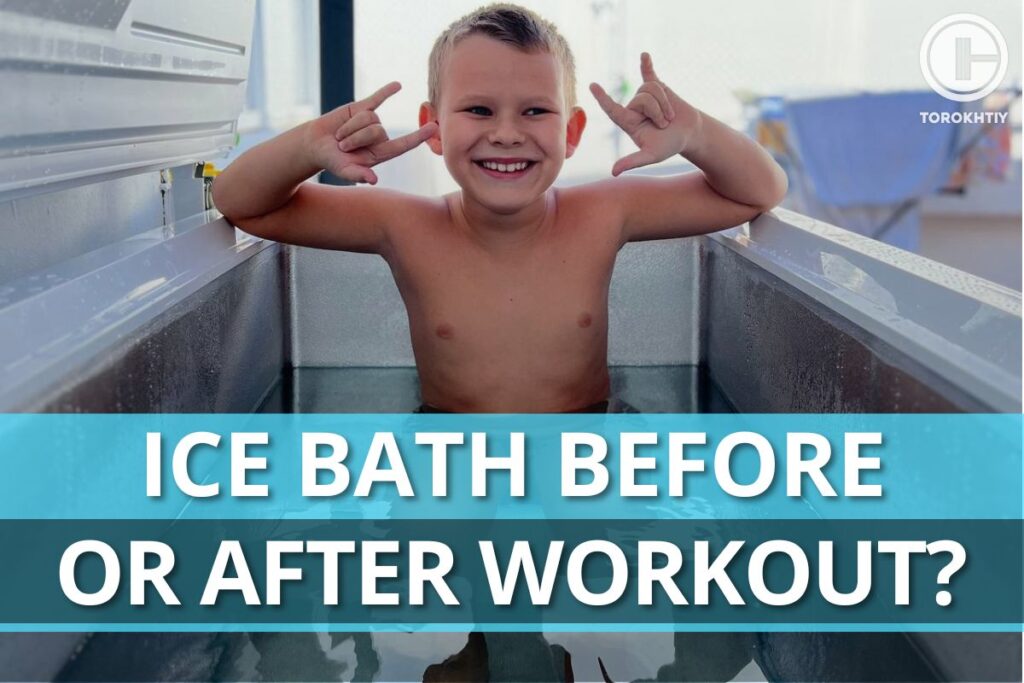
What’s a Cold Plunge?
A cold plunge involves a regime in which a substantial part of the human body is immersed in cold water for a limited period, ideally from 1 up to even 60 minutes, depending on the temperature.
Typical ice baths require you to plunge in water ranging between 15 °C to 2 °C but can be lower, depending on your cold tolerance. For instance, brief exposure for 1-3 minutes at very cold temperatures like 1°C to 7 °C. It’s essential to listen to your body before increasing the exposure time and regulate the temperature based on your comfort level and cold tolerance.
This range is considered to be more effective than at 10 °C – 15 °C for better therapeutic effect, reducing inflammation, and promoting after-workout recovery.
Another option is practicing long exposure for 20-60 minutes at more moderate temperatures, i.e., 15 °C. While the ice plunge lasts for a short duration, it creates a physiological response, which, in turn, provides potential health benefits.
Like working out, ice baths or cryotherapy of any form are extremely stressful to the body, but the benefits of the body’s response outweigh the direct effects of the stress.
The cold from the ice bath can be a hormetic stressor (good stress), meaning it’s beneficial to your body in limited quantities, beyond which it becomes harmful. As hormetic stressors, ice cold baths help to activate a host of anti-inflammatory pathways and increase catecholamines production.
Ice bath benefits are triggered through different physiological responses but all are the result of response to the deliberate cold exposure. Human body has to fight back cold exposure (heat as well but in different ways like sweating for example) due to thermoregulation abilities, i.e., vasodilation and vasoconstriction, shivering, and non-shivering thermogenesis. Cold exposure can activate the brain, cold receptors and muscles response.
- Thermoregulation is maintaining body temperature despite changes in your surroundings.
- Vasodilation is the process when blood vessels in your body widen, allowing more blood to flow through them and lowering your blood pressure. When you enter the hot water, your body can automatically make blood vessels dilate to prevent overheating your body, but there are limits obviously. That’s why you should never stay in a sauna too long.
- Vasoconstriction is the opposite process when blood vessels constrict and get more narrow. For example, when you’re in the cold water, vasoconstriction helps keep your vital organs warm, by cutting the blood supply to your extremities. But vasoconstriction can raise your blood pressure as a result.
- Shivering is a mechanism of thermoregulation, meaning the ability to maintain body temperatures through involuntary muscle contractions. We all know that feeling…
- While non-shivering thermogenesis is the ability to raise body temperatures by diverting energy to heat the body. Non-shivering thermogenesis is the heat production due to metabolic energy transformation without involving the contraction of skeletal muscles. This process mainly involves the burning of brown adipose tissue, which is triggered by sympathetic activity.
When to Take an Ice Bath: Before or After Training?
Now that we’ve discussed the body adaptations due to voluntary cold exposure, let’s look at the right timing for ice baths: cold plunge before or after workout.
Ice Bathing After Workout
Many studies and online publications research the effects of cold plunges after workouts and focus on the benefits of ice baths on recovery. Therefore, if we’re interested in the anti-inflammatory effects there’s a catch.
One of the benefits of exercising is exercise-induced inflammation (acute). An initial low-level inflammation response clears away debris, helps to rebuild tissues, aids in muscle growth, and assists with increased muscle mass.
The inflammatory stress caused by intensive or regular workouts can last up to 48 hours. As your body gets accustomed to such tough physical activity, you’ll experience the benefit of exercise.
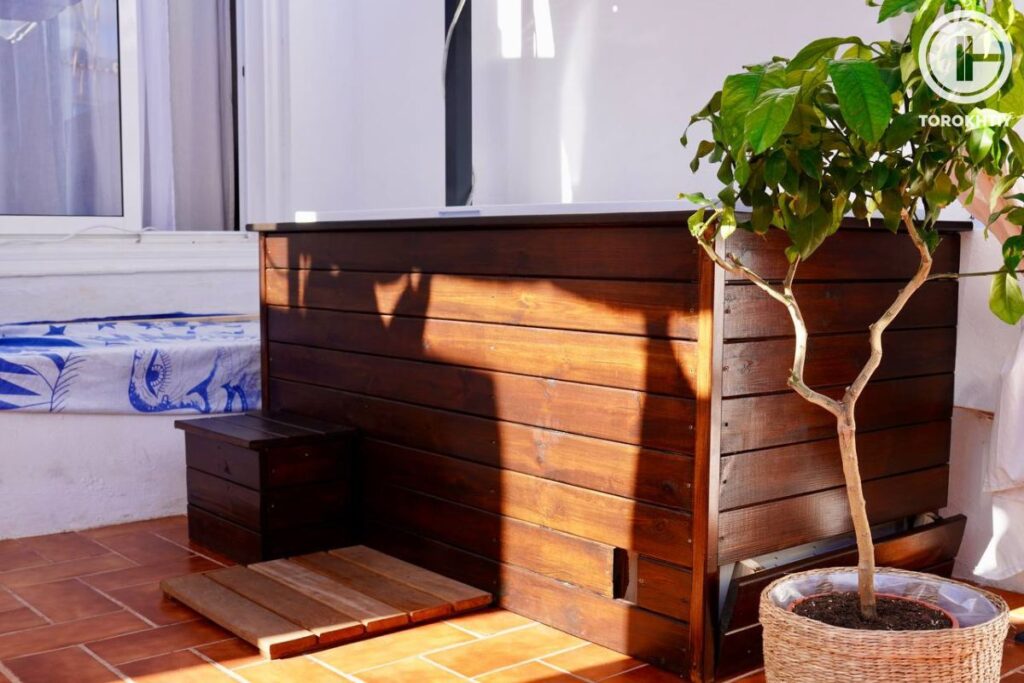
Therefore, if during the initial phase of this period you go for an ice bath, you’ll blunt or counter your body’s response to the workout inflammation. Consequently, you’re unlikely to gain the full benefits of your exercise/workout.
The major point is that you don’t want to interrupt the acute inflammation after working out which can last for a few hours. It’s better not to interrupt that response at least 4-6 hours after exercise. Sometimes killing that acute response may be actually beneficial – like during multiple bouts in cross-training or competitions.
Ice baths are most likely more beneficial for other things than post-exercise “benefits”. In high-performance athletes, it can decrease training adaptation resulting in significant (for them) detrimental effects on their performance.
In short, many health professionals recommend time away from ice bathing after exercising. Refrain from taking an ice bath right after the workout, and instead, take some time before taking a dip to allow the workout inflammation to work. You can also think about this…
Your early ice bath in the morning (before your workout) can still be your post workout recovery tool if we extend the timeline 😉 it may be a valuable recovery tool to your training from the previous day.
1. Effectiveness of Ice Baths After Workout
Post-workout ice baths generally don’t do anything about muscular development but can be helpful in joint and pain relief. However, cold water immersion can affect negatively strength on training adaptations in more advanced athletes with strength training experience.
It’s a therapy that many athletes use to help reduce soreness. Ice-cold water immersion is common for many top-level athletes. The athletes believe a dip in cold water at 12-15°C helps with muscle pain and soreness, especially after competitions or training sessions. Despite the prevalence of the ice water practice, the practice of cold plunge after workout is backed by systematic reviews and studies.
Furthermore, cold-water immersion after workout helps reduce Delayed Onset Muscle Soreness (DOMS) after exercise. It found that ice bath immersion after workout is more effective than passive interventions such as rest and works best when combined with other measures such as massage.
Meanwhile, a study published by the Journal of Emergencies, Trauma, and Shock gives cold plunge after workout practice a back seat regarding the most effective recovery methods. Instead, it gives preference to proper warm-up & cool-down, enough rest, proper diet, and massage.
2. Ice Bath After Workout Pros and Cons
Positives:
Could be better:
Ice Bathing Before a Workout
While it’s generally recommended that you take an ice bath after workout, there’s some evidence that suggests that taking a cold shower before working out is beneficial.
Optimally you should separate ice bath from training with at least 4-6 hours if done after workout. Hence, cold water immersion is believed to be better early in the day. So, the best way would be actually to do it before a workout, but not just before as a pre-cooling.
Such an immersion will have more benefits due to overall stress resistance, brown fat, immunity/resilience to cold, insulin sensitivity, catecholamine response, and keeping the system on toes.
The benefits of an ice bath before a workout generally revolve around body activation. Pre-cooling your body rapidly eliminates heat from the body, thus creating larger heat storage. However, the study points out that it’s less understood how pre-cooling increases the capacity for prolonged workouts at different ambient temperatures.
On the other hand, an ice bath before a workout may be an effective strategy to enhance endurance performance in hot conditions. A good pre-cooling protocol can be to immerse your body in cold water <10°C for 1-3 minutes before a workout or a competitive match. Another option would be cold plunging for ~20-60 minutes at ~15°C.
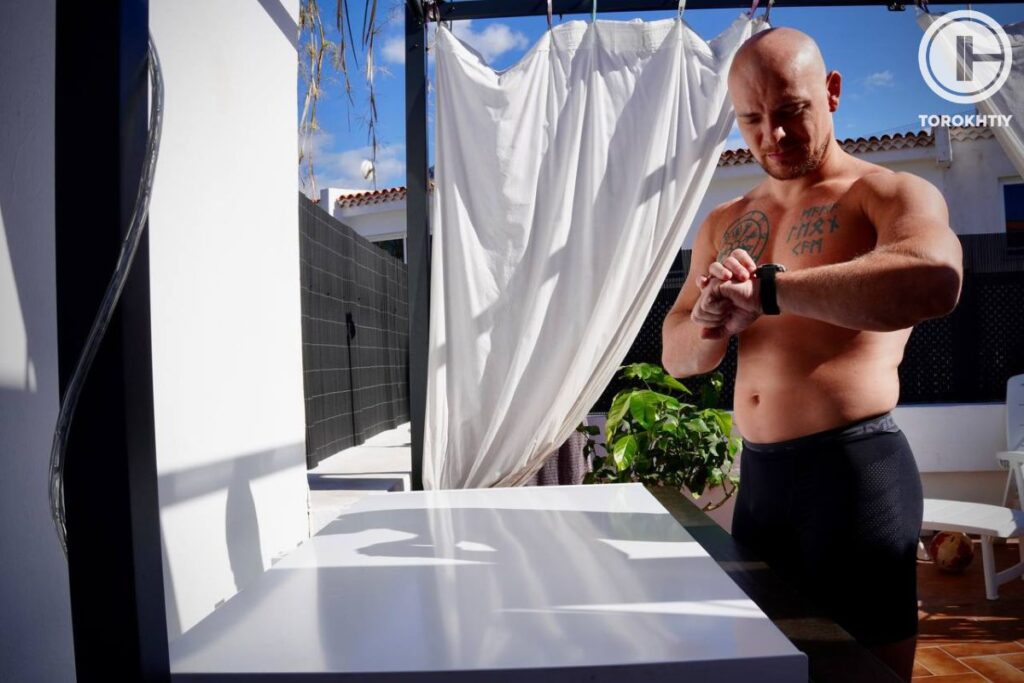
1. Effectiveness of Ice Baths Before Workout
One of the main benefits of ice baths before workouts is increased testosterone levels in men. The research indicates that participants who took ice baths before the workout exhibited higher testosterone levels compared to those who did not and, more notably, those who took an ice bath after the workout.
Basically, ice bath before a workout can result in:
- Catecholamine release (dopamine, epinephrine, and norepinephrine) as a response to the cold shock;
- Activation of brown fat;
- Improved stress resistance;
- Adaptation to cold;
- Possible lower blood pressure;
- Improved insulin sensibility;
- Mental resilience;
- Possible testosterone growth.
Moreover, ice baths before workouts are beneficial for increased alertness and energy. As with most stressors, voluntary exposure to cold causes the body’s sympathetic nervous system to release dopamine. Dopamine is responsible for enhancing focus, increasing alertness, and boosting energy levels, and attention.
Cold water immersion can affect the inflammation levels in the body. But it depends on the case whether CWI will improve or delay the recovery process if it’s exercise-induced inflammation. It can definitely help with muscle soreness and pain but can kill some gains as well.
Inflammation is needed for adaptation – we just need to have it under control. If there is too much inflammation, then the recovery will be delayed; if there is not enough inflammation, the healing process might not start. So, killing inflammation is not always beneficial.
People often confuse lactate accumulation with sore muscles. Lactates get cleared by your liver quite quickly after exercise. Heart can also use lactates as an energy source. So it’s not really true that an ice bath can help clear “lactic acid”.
Ice bath can reduce inflammation by cooling you down, and reduce pain and soreness as a result. But, it can also delay healing if it’s after training. Ice bathing before the training can improve blood flow and possibly be good for your recovery after the workout.
2. Ice Bath Before Workout Pros and Cons
Positives:
Could be better:
3. Ice Bath Before vs. Ice Bath After Workout
Ice bathing does not increase hypertrophy, it can inhibit it in some cases. The best way for you to use it is after exercising (namely, right after) when you have multiple bouts specifically if you’re working out in hot conditions.
Otherwise, jump into cold water before for other benefits. As a recovery tool, it should be used at least 4-6 hours after a workout or the next day in the morning. It’s recommended to use a cold plunge in the morning a few times a week to even every day.
Here’s a comparison of the effects of ice bath before and after workout:
| Ice Bath Before Workout | Ice Bath min 4-6 hours After Workout (preferably next day in the morning) | Ice Bath After Workout |
|---|---|---|
| – | Aiding the relief of sore muscles | Aiding the relief of sore muscles |
| No effects on hypertrophy | No significant effects on hypertrophy | Can limit hypertrophy and delay recovery |
| Pre-cooling can result in better performance in endurance events | Improves recovery | Potential benefits for multiple bouts/ events/ fights a day |
Other Benefits or Results Independent of Timing:
- Catecholamine release (dopamine, epinephrine, and norepinephrine)
- Activation of brown fat
- Improved stress resistance
- Adaptation to cold
- Possible lower blood pressure
- Improved insulin sensibility
- Mental resilience
- Possible testosterone growth
When Should You Ice Bath if You Train: Things to Consider?
As we mentioned before, ice bathing doesn’t influence muscle growth greatly, otherwise, it can inhibit it. When you have multiple bouts, participate in competitions, or train in hot conditions, you can have ice bathing right after exercising.
Tips From the Champ
I want to make sure you understand that some of the results of deliberate cold exposure only, will be much more beneficial early in a day (like adrenaline and dopamine release) while not so much close to your bedtime. Also that cold exposure is a potent stressor itself and there is no need to combine it with resistance training for stress adaptation and resilience.
Olympic Weightlifting Champion
On the contrary, cold plunge immersion before the workout won’t benefit you much. For a better recovery, you’d better do ice bathing at least 4-6 hours after workout or the next day in the morning.
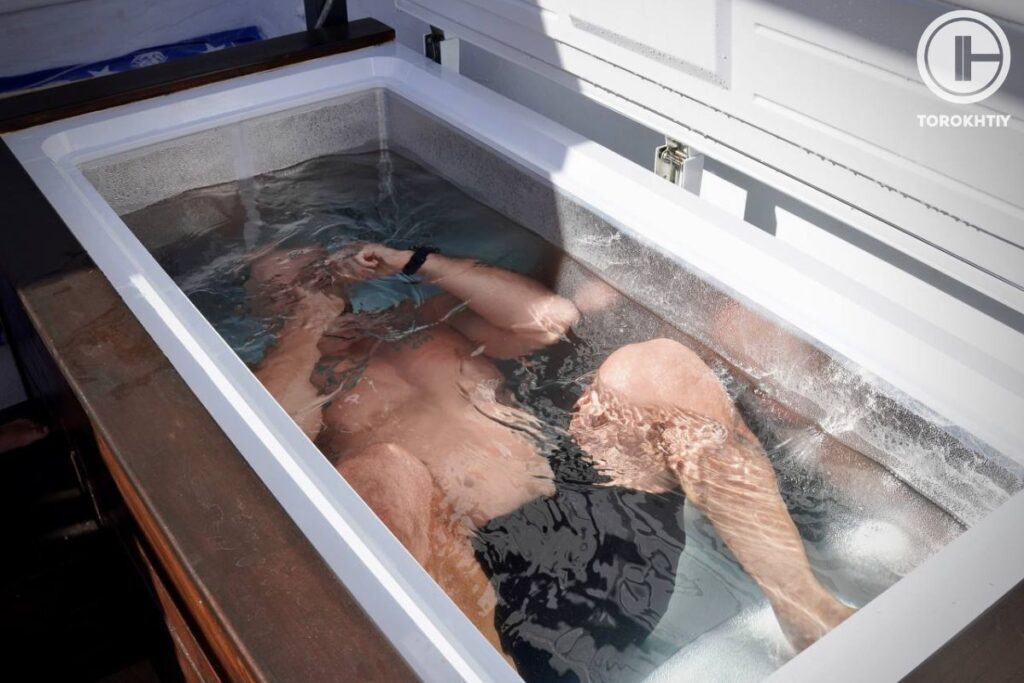
1. Training Regime & Fitness Goals
The ice baths are more potent for health than as a recovery tool from traditional strength training. They’re beneficial for recovery, but they attenuate muscle growth and strength. Exposure to cold blunts your body’s response to strength training, thus reducing the potential for hypertrophy and strength gains.
Therefore, if you’re training purposefully for muscle gains, do ice bathing at the right time: in the morning or six hours after training to get the main health benefits of cold plunging without affecting gains from your workout.
2. Health Condition
Ice baths aren’t suitable for everyone. Certain precautions and contraindications may hinder trainers from taking ice baths. For example, trainers with medical conditions like Raynaud’s disease, circulatory problems, and a compromised immune system should avoid ice baths or seek medical advice beforehand.
3. Individual Response and Cold Tolerance
Response to ice baths varies from one person to another. While some trainers will find the ice bath beneficial to their training regime, others may not experience the positive effects and may even find it uncomfortable.
The optimal timing and duration of ice baths are still debatable, but this will depend on your cold tolerance. We have already told you that the possible duration for pre-cooling can be ~20 minutes at ~15°C.
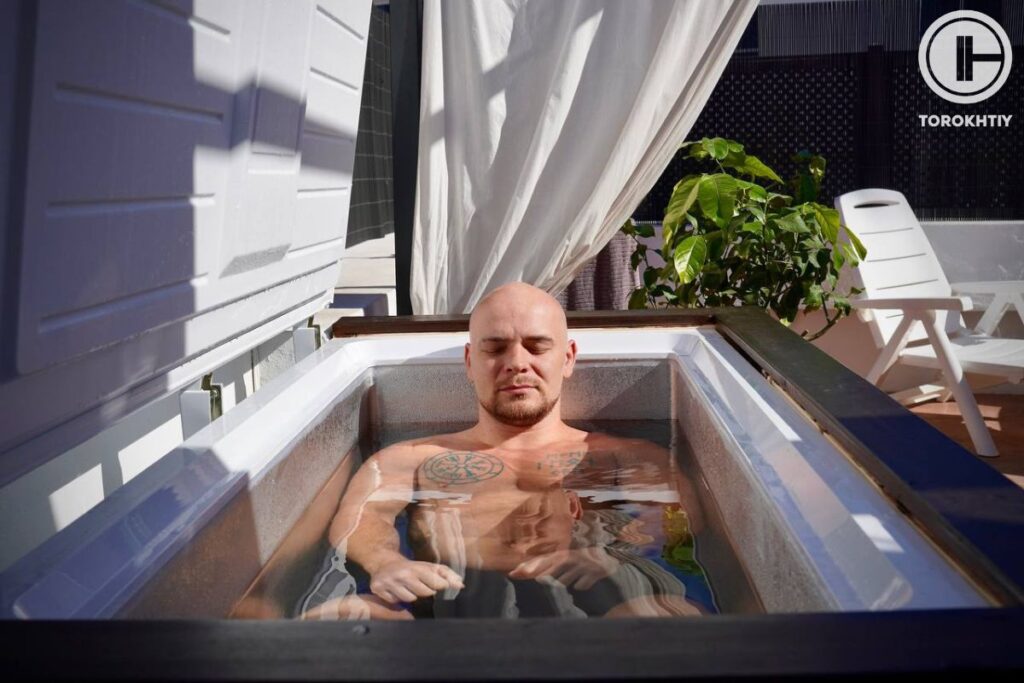
However, it’s possible to practice the brief exposure for 1-3 minutes at very cold temperatures like 1°C to 7°C; or longer exposure for 30-60 minutes at moderate temperatures, for instance at 15 °C. While the ice plunge lasts for a short duration, it creates a physiological response that can last for hours, which provides potential health benefits.
But, keep in mind that too much cold exposure can lead to hypothermia, which can result in shivering, slow, shallow breathing, exhaustion, slow, weak pulse, etc., and overall can be life-threatening.
For that reason we always advise to “have fun” with cold plunge with someone by your side (not in the water tho 😀) making sure everything is ok – water, especially cold one is not a joke.
4. Workout Regime (Professionals VS. Casual Trainers)
Any healthy athlete, both advanced and amateur, or beginner can use cold therapy for health benefits. Top athletes may use ice bathing if they have training sessions more than once a day like tournaments or during cross-training games with multiple bouts.
Actually, only professional athletes will see significant changes for them, i.e., a possible decrease in performance after doing ice bathing right after training. Moreover, in many cases, it doesn’t help with recovery, but it’s just killing inflammation.
Therefore, taking an ice bath immediately after a game or workout may benefit top athletes with a tight game/fitness schedule, who must reduce the workout inflammation, reduce the pain and cool down for the next game.
5. Alternatives
If a cold water plunge isn’t your cup of tea, consider trying alternatives such as contrast water therapy and adding cold plunge to your sauna (it’s easier 🙂), cold showers (they are terrible 🙂) or stick to more common ways to help with recovery.
Ice Barrel We Recommend for Ice Bath after Working Out
Our top-pick and recommended ice bath is Ice Barrel 300. I have one, and I love the quality and design of this barrel. It canhelp to strengthen your immune system, boost stress resilience, mental grit, and renew your physical condition.
Out of the box, you can tell it’s built with quality in mind. Unlike the plastic barrel bins or oversized Tupperware bins from Home Depot. Instead, it’s genuine and purpose-built for a cold therapy experience.
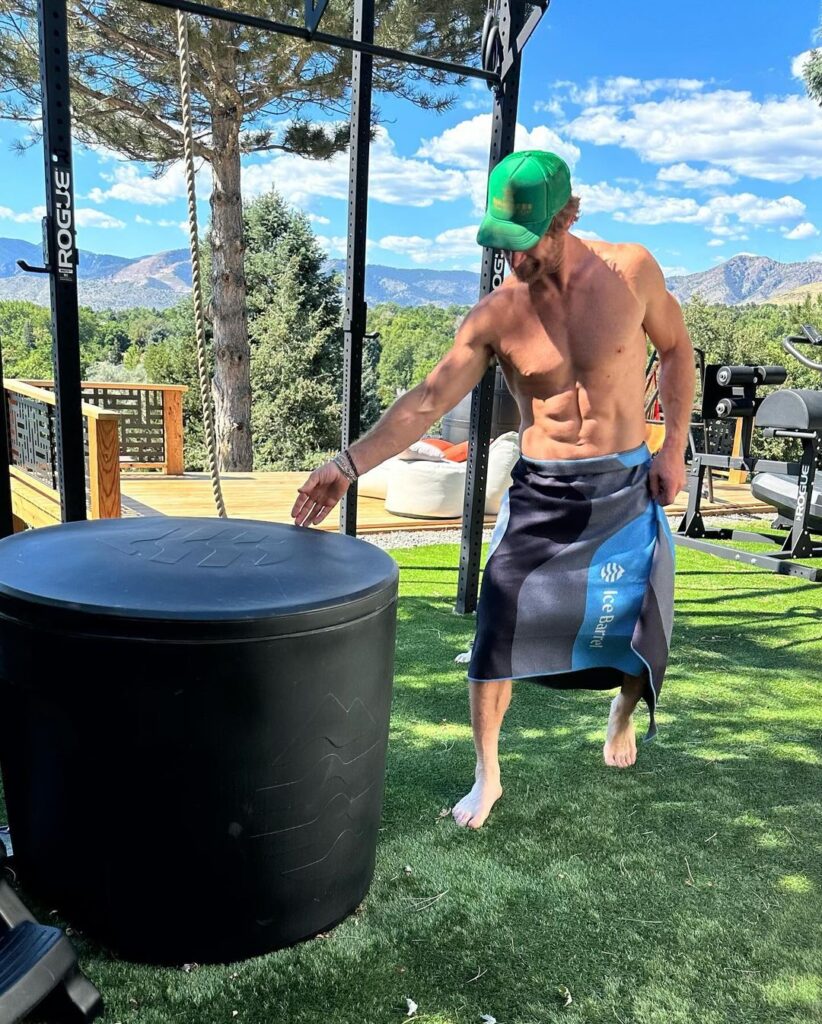
Setting and using this ice bath feels like a dream. Setting up takes less than 20 minutes and comes with everything you need for a refreshing ice bath.
The main highlight, however, is the size. It’s big enough and more than spacious, even for tall, fairly muscular guys like me. I didn’t have any trouble getting in or out. And for the price, the Ice Barrel 300 is a complete steal. I can’t recommend it enough.
FAQ
Is It Best to Ice Bath Right After Workout?
It’s better and safer for athletes to do ice bath before as a great recovery tool from the previous day and a good mental boost for the upcoming one.
Should You Ice Bath if You Workout?
it’s an amazing tool for your health regardless if you’re exercising regularly, or from time to time.
Conclusion
There’s some preliminary evidence that an Ice Barrel 300 before or after a workout can be valuable in your fitness journey.
For example, an ice bath before workouts can help with mental stimulation, and even improve your testosterone levels. It can improve blood flow to your muscles for more workout efficiency and endurance.
There is very limited evidence of whether it helps with recovery and tons of evidence of it decreasing performance. Ice bathing after a workout doesn’t mean that you may feel better, and it doesn’t mean you will recover faster or better. Inflammation processes are needed for stress adaptation.
However, you have to understand the rationale and choose wisely. Remember, low temperature is a potent stimulus for the brain and body, but it also carries certain hazards if not done correctly.
What are your opinions on the right timing of ice baths? When do you think is the right time to take an ice plunge and for what reasons? Share your experience with us of ice plunges in the comment section below.
Also read:
- Best Cold Plunge in Bathtub
- What to Do After an Ice Bath
- How to Keep Ice Bath Water Clean
- Ice Bath vs Hot Bath
- Cryotherapy vs Ice Bath
- Cold Shower vs Ice Bath
- Do Ice Baths Burn Fat
- How Cold Should a Cold Plunge Be
- Homemade Ice Bath
- Warrior Pro Ice Bath Tub Review
References:
- Chris Bleakley , Suzanne McDonough, Evie Gardner, G. David Baxter, J. Ty Hopkins, Gareth W. Davison, “Cold-Water Immersion (Cryotherapy) for Preventing and Treating Muscle Soreness after Exercise,” Journal of the Cochrane Database of Systematic Reviews 2012, no. 2 (2012): CD008262.
- Fatimah Lateef, “Post Exercise Ice Water Immersion: Is It a Form of Active Recovery? Journal of Emergencies, Trauma, and Shock 3, no. 3 (2010): 302.
- F. E. Marino, “Methods, Advantages, and Limitations of Body Cooling for Exercise Performance,” British Journal of Sports Medicine 36, no. 2 (2002): 89-94.
- L. Chen, H. Deng, H. Cui, J. Fang, Z. Zuo, J. Deng, Y. Li, X. Wang, L. Zhao, “Inflammatory Responses and Inflammation-Associated Diseases in Organs,” Journal of Oncotarget 9, no. 6 (2021): 7204-7218.
- Llion A. Roberts , Truls Raastad, James F. Markworth, Vandre C. Figueiredo , Ingrid M. Egner, Anthony Shield, David Cameron-Smith, Jeff S. Coombes, Jonathan M. Peake, “Post-Exercise Cold Water Immersion Attenuates Acute Anabolic Signalling and Long-Term Adaptations in Muscle to Strength Training,” The Journal of Physiology 523, no. (2015): 4285-4301.
- Paul R. Jones, Christian Barton, Dylan Morrissey, Nicola Maffulli, Stephanie Hemmings, “Pre-Cooling for Endurance Exercise Performance in the Heat: A Systematic Review.” BMC Medicine 10, no. 166 (2012).
Why Trust Us?
With over 20 years in Olympic weightlifting, strength training, nutrition coaching, and general fitness our team does its best to provide the audience with ultimate support and meet the needs and requirements of advanced athletes and professional lifters, as well as people who strive to open new opportunities and develop their physical capabilities with us.
By trusting the recommendations of our certified experts in coaching, nutrition, and sports training programming, as well as scientific consultants, and physiotherapists, we provide you with thorough, well-considered, and scientifically proven content. All the information given in the articles concerning workout programming, separate exercises, and athletic performance, in general, is based on verified data.
The product testing process is described in more detail here.
Author: Jacek Szymanowski
Certified Nutritionist,
M.Sc.Eng. Biotechnology
Performance Architect,
Strength and Conditioning Specialist
With over 30 years of fighting experience, specialization in nutrition coaching for athletes, and expertise in metabolic health and dietary strategies, Jacek offers a comprehensive approach to optimizing your performance and well-being. Backed by a Master of Science degree in Biotechnology, Jacek remains at the forefront of scientific advancements, ensuring that his coaching is always evidence-based and up-to-date.




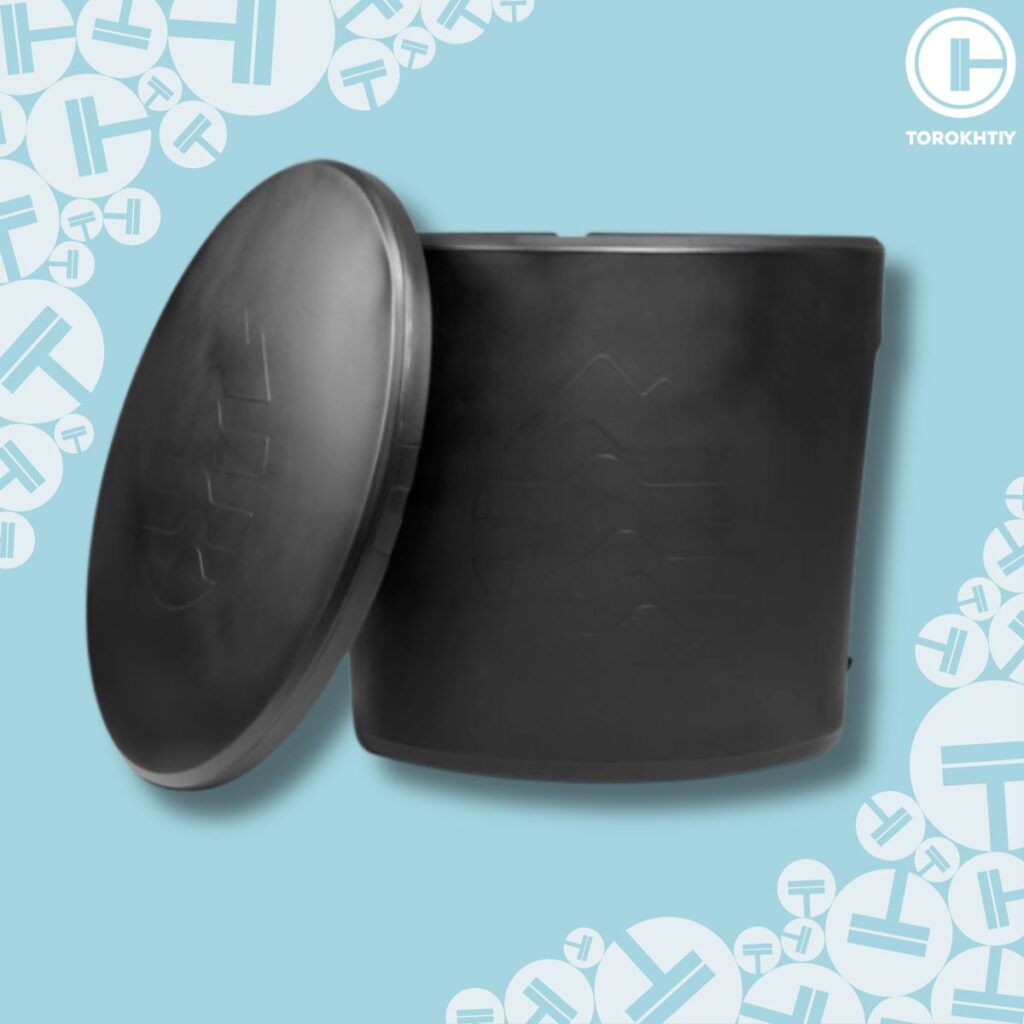
Still have questions after reading our article? Unlock your full potential by engaging with our experts and community! Don’t hesitate — leave a comment below and Jacek Szymanowski will provide a personalized answer and insights to help you reach your goals.